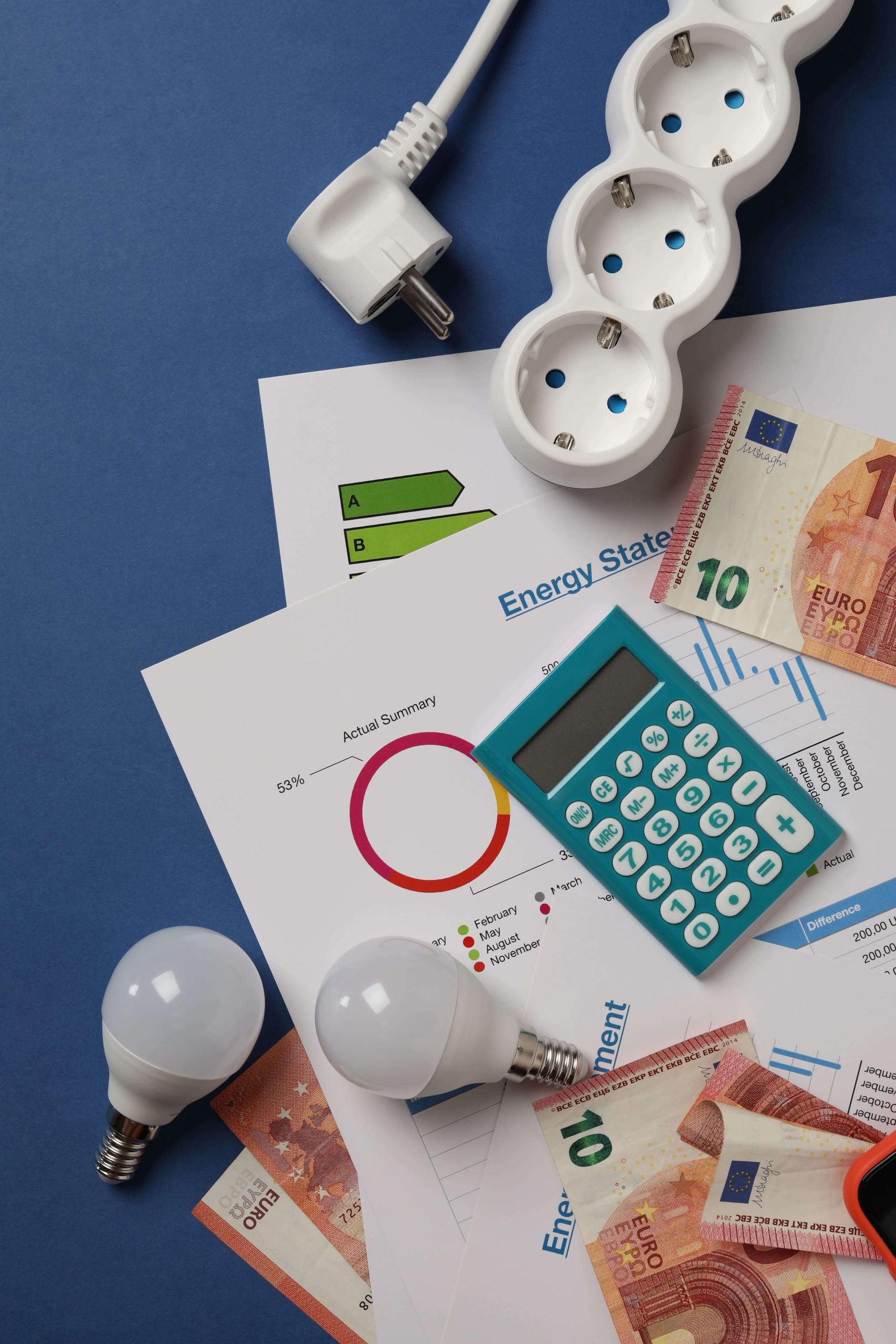Households around the world including those in house and lot in Cavite, are suffering from growing electricity bills as a result of rising energy costs. The reality of rising power prices emphasizes the significance of implementing energy-saving measures, regardless of the cause—economic factors, supply chain disruptions, or environmental regulations. Fortunately, people can lessen their environmental impact and lessen the effects of rising energy costs by taking doable actions.
Top Energy Saving Ways for Your Home
There are lots of ways to save energy in your house, which can lower your utility costs and lessen your carbon footprint.
Proper Insulation
In order to minimize heat gain in the summer and loss in the winter, proper insulation is essential. By properly insulating your house, you can build a barrier that lessens the need for heating and cooling systems to regulate the interior temperature.
The foundation of your home’s energy efficiency is insulation. It serves as a barrier, keeping heat from entering in the summer and escaping in the winter. Your heating and cooling systems will have to work harder to keep you at a comfortable temperature without adequate insulation, which will raise your energy costs and increase carbon emissions. Effective home insulation not only raises comfort levels but also dramatically lowers energy waste and negative environmental effects. To build a well-insulated envelope that keeps your house warm all year long and lowers your energy costs, think about investing in high-quality insulation materials for your walls, attic, floors, and even pipes.
Switch to LED Light Bulbs, Save Big on Energy
Compared to conventional incandescent bulbs, LED bulbs are significantly more energy-efficient. They are a wise choice for lighting your home while using the least amount of energy because they have a much longer lifespan and use a lot less energy.
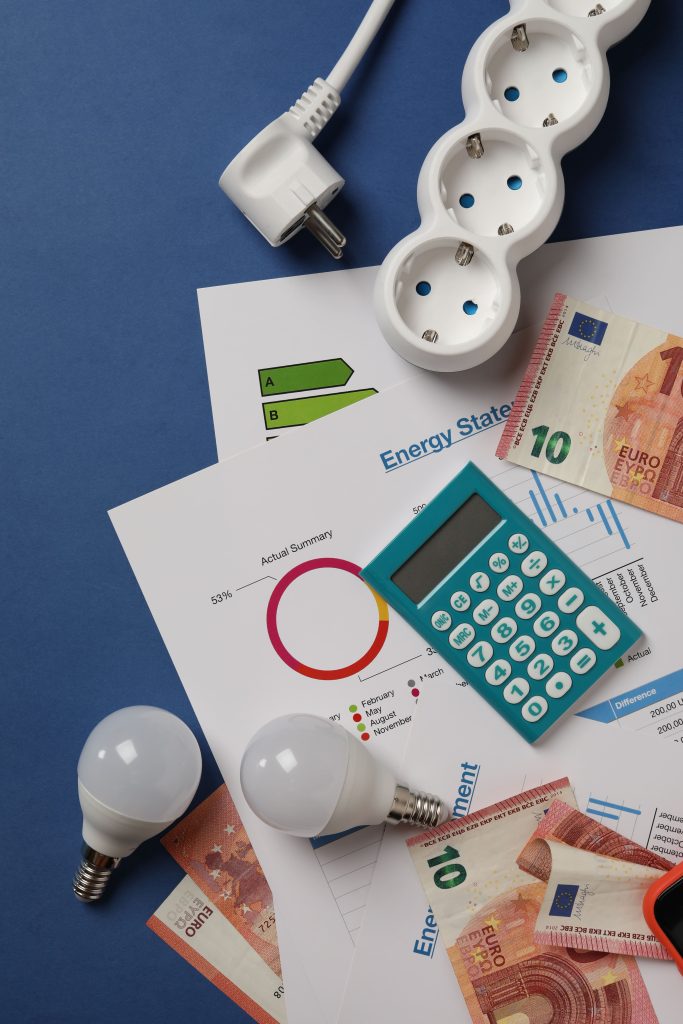
These bulbs transform lighting because they use a great deal less energy than conventional incandescent bulbs and have a remarkably longer lifespan. Throughout your house, switching to LED lighting will not only save energy costs but also cut down on how often you need to change out your bulbs, which will ultimately save you time and money. LED bulbs produce less heat and produce bright, high-quality light, which makes them safer and more comfortable to use. Furthermore, because of their adaptability, a range of lighting options—including dimmable and color-changing features—can be provided to suit a variety of requirements and tastes. LED lighting is the foundation of energy-efficient lighting, and it’s an easy and effective way to cut your electricity costs and carbon footprint.
Purchase energy-efficient appliances
When compared to their more recent, energy-efficient counterparts, older appliances—like air conditioners, dishwashers, washing machines, and refrigerators—often use excessive amounts of energy. Purchasing Energy Star certified appliances for house and lot in Cavite allows you to take advantage of cutting edge technology and save a substantial amount of money on your utility bills over the long run. These appliances offer exceptional functionality and efficiency because they are made to reduce energy waste without sacrificing performance. Make energy efficiency a top priority when remodeling your entire house or just a single appliance to help create a more sustainable future and reap the rewards of lower energy bills and more convenience.
Keep the thermostat at a lower temperature and Put Natural Ventilation to Use
Optimizing the performance of your HVAC systems is essential for attaining cost savings and maintaining environmental sustainability. By ensuring that these systems run at their best, regular maintenance and upkeep minimize energy waste and lower your carbon footprint. Regular inspections, filter cleaning, and HVAC equipment tuning all help to improve efficiency, extend system life, and save operating expenses.
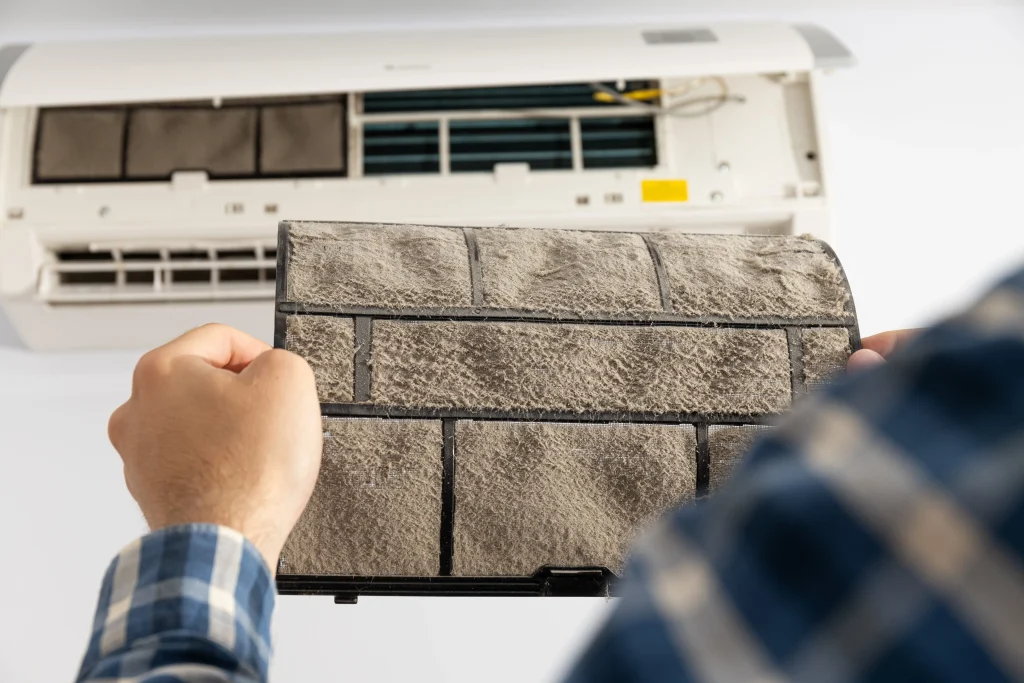
One of the main components of energy-efficient living is making the most of natural ventilation. Especially in mild weather, opening windows strategically lets fresh air circulate through your house and lessens the need for mechanical cooling systems. Adopting natural ventilation improves indoor air quality and encourages a more environmentally friendly way of living. This straightforward but efficient method makes a house cozier and more welcoming by lowering energy usage and encouraging a connection with the outside world.
Upgrade to high-efficiency HVAC systems instead; they use cutting-edge technologies to provide better comfort with lower energy usage. By giving you exact control over temperature settings according to your schedule and preferences, smart thermostats help you save even more energy. Making heating and cooling system optimization a top priority not only improves indoor comfort but also helps the environment by preserving important energy resources.
Install energy-efficient windows
A sustainable and cozy living space is largely dependent on the installation of energy-efficient windows. These windows have high-tech features like low-emissivity coatings and double or triple glazing, which reduce heat transfer and improve insulation. You can lower your heating and cooling systems’ workload and save a lot of energy by switching to energy-efficient windows, which also result in lower utility bills. These windows reduce drafts and noise penetration, which enhances indoor comfort in addition to their energy efficiency. Additionally, by shielding damaging UV rays from your furnishings, they aid in preventing sun damage. A commitment to environmental responsibility is demonstrated by purchasing energy-efficient windows, which also improve your home’s value and appearance.
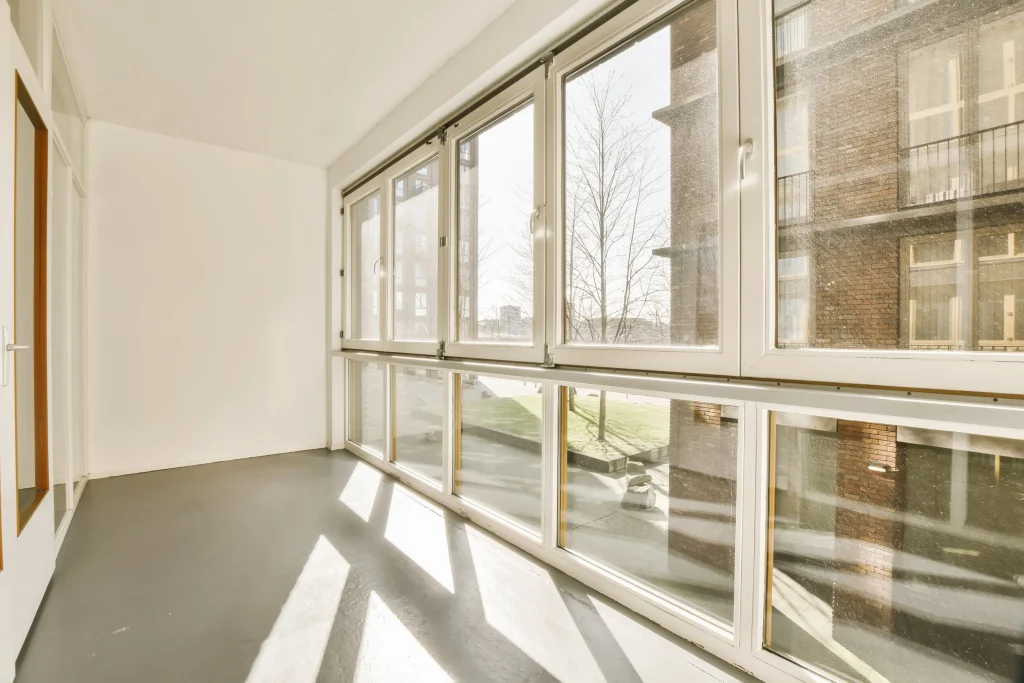
What Uses the Most Electricity in My Home?
- System for Heating and Cooling – The majority of electricity used in a home is usually consumed by heating, ventilation, and air conditioning (HVAC) systems, particularly in areas with harsh weather.
- Water Heater – It heats the water used for dishes, laundry, showers, and other daily chores. Considering methods to improve the efficiency of your water heater and lower energy consumption is crucial since water heating can contribute significantly to overall energy usage. When it’s time for a replacement, you should think about energy-efficient models, seal any leaks, lower the temperature on your water heater, and insulate it.
- Lighting – “Turn off the lights when leaving the room.” Lighting is a constant source of electricity consumption in the house because it is frequently used in many areas during the day and night. Light fixtures in homes usually consist of lamps, outdoor lighting, overhead lights, and decorative fixtures. These fixtures can use a significant amount of energy over time.
- Appliances – A lot of appliances, like freezers and refrigerators, are used all day long and run nonstop to keep food cold. Others, such as dishwashers and washing machines, are infrequently used but nonetheless use a substantial amount of electricity when they are running. Modern appliances typically use less energy than their older counterparts. Over time, significant energy savings can be achieved by upgrading to Energy Star-rated appliances or more contemporary, energy-efficient models.
Consume Less Energy from the Grid
One of the best ways to save money, lessen your impact on the environment, and help create a more sustainable future is to use less energy from the grid.
Install Energy Star certified appliances in place of outdated, inefficient ones. With the same level of performance, these appliances are made to consume less energy. Replace your incandescent light bulbs with LED ones; they last a lot longer and consume a lot less energy. Even when they are off, a lot of electronic devices still consume power. For easy on/off switching, unplug electronics like chargers, TVs, and computers when not in use, or use power strips.

Image from https://www.blackhillsenergy.com/
For optimal heat retention in the winter and cooling in the summer, make sure your home is adequately insulated and seals off any drafts. Energy savings may result from a decrease in the need for heating and cooling. To enhance insulation and lessen heat transfer, consider replacing your old windows with energy-efficient double or triple glazing. To create your own clean, renewable energy, think about putting solar panels on your home. Over time, this may help you pay less for electricity and greatly lessen your dependency on the grid.
Energy consumption can also be decreased by making small behavioral adjustments like turning off lights when leaving a room, shaving shorter showers, and air-drying clothes rather than using a dryer.
- Make it a habit to switch off lights, TVs, laptops, and other devices when not in use. Power strips are a handy way to quickly turn off several devices at once.
- Employ energy-saving cooking techniques, such as covering pans and pots while they’re cooking, selecting the appropriate burner size, and skipping the oven’s preheating phase for quick meals.
- To guarantee that your appliances function well, keep them clean and well-maintained. Maintain the cleanliness of the coils and filters on appliances such as dryers, refrigerators, and air conditioners.
- When not in use, unplug the chargers for phones, laptops, and other electronics. They still consume energy even when they are not actively charging.
- Open the blinds or curtains during the day to take advantage of the natural light. When there is enough daylight, turn off any lights that are not needed.
Tips to Improve the Energy Rating of Your Home
Clean or replace your air filters
To guarantee effective airflow, clean or replace the air filters in your HVAC system on a regular basis. Airflow can be restricted by clogged filters, which will increase the effort and energy consumption of your system. This easy upkeep chore can lower energy use and enhance indoor air quality. High-efficiency air filters can provide better filtration and save energy. Clean air filters not only increase energy efficiency but also contribute to improved indoor air quality. Dust, pollen, pet dander, mold spores, and other airborne particles are captured by air filters, which stop them from spreading throughout your house. For people who suffer from allergies, asthma, or other respiratory disorders, this is especially crucial because cleaner indoor air can reduce symptoms and enhance comfort levels.
Solar-powered devices
With the help of solar panels, you can power your house with a sustainable and renewable energy source. It is possible to produce clean energy to reduce or even completely eliminate your dependency on electricity from the grid by mounting solar panels on your roof or in your yard. Both your carbon footprint and your electricity costs can be greatly reduced by doing this.
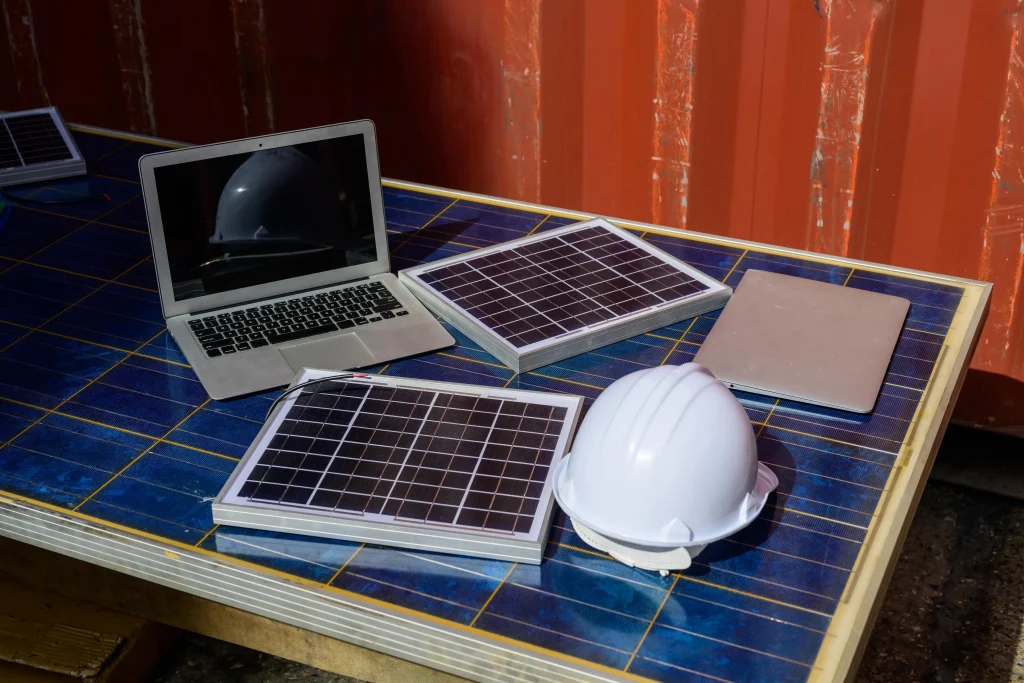
Solar water heaters heat water for household uses like laundry, dishwashing, and bathing by harnessing the sun’s energy. Generally, these systems are made up of a storage tank, a circulation pump, and solar collectors. Photovoltaic cells are used in solar-powered outdoor lights to convert sunlight into electricity, which is then stored in rechargeable batteries. Without using grid electricity, these lights automatically turn on at dusk and turn off at dawn to provide lighting for outdoor areas such as gardens and pathways.
Using solar-powered gadgets and chargers, you can use solar energy to power electronic devices like tablets, smartphones, and portable speakers. The built-in solar panels on these gadgets are usually used to transform sunlight into electricity, which is then used to recharge the batteries in your electronic devices.
Using smart automated devices
Home automation technology, commonly referred to as smart automated devices, enables you to remotely or automatically control a variety of home functions.
Utilizing voice commands or a smartphone app, smart thermostats are programmable devices that let you remotely control your heating and cooling systems. These thermostats adjust the temperature automatically to maximize comfort and energy efficiency as they get to know your schedule and preferences over time. They can reduce energy consumption without compromising comfort, for instance, by lowering the temperature while you’re sleeping or away from home.
Refrigerators, washers, dishwashers, and ovens are examples of smart appliances. These appliances have sophisticated features and internet connectivity that let you monitor and manage them from a distance.
Smart home automation hubs enable you to integrate and automate different aspects of your home by serving as centralized control systems for all of your smart devices. With the help of these hubs, you can program unique automation scenarios and routines that can be activated by a single command or trigger. Some examples of these include locking doors, changing the thermostat, and turning off lights when you leave the house.
While adjusting to a power rate increase can be difficult, you can lessen its effect on your household budget and carbon footprint by using these energy-saving strategies. Every tiny improvement, such as increasing natural lighting or switching to energy-efficient appliances, adds up to a more sustainable future. Adopting energy-saving techniques helps you save money and contributes significantly to creating a more robust and clean energy system for future generations.


